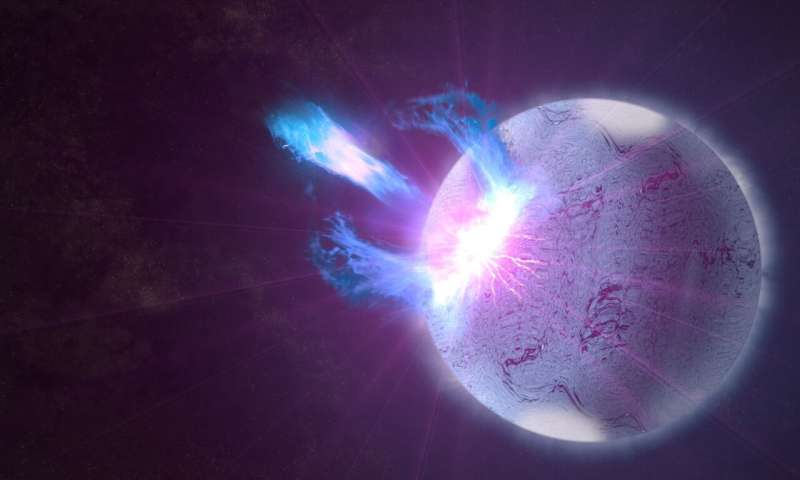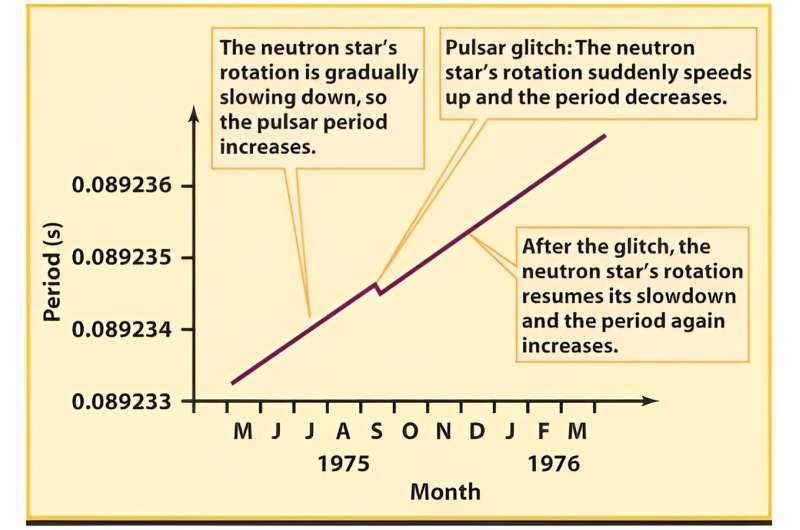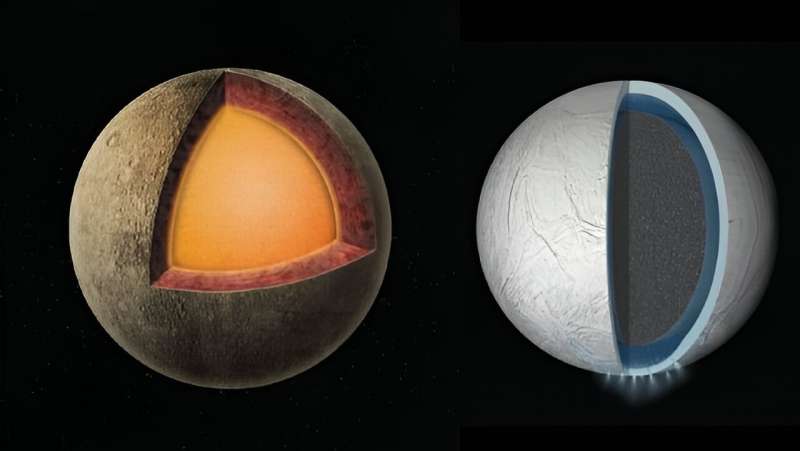This article has been reviewed according to Science X's editorial process and policies. Editors have highlighted the following attributes while ensuring the content's credibility:
fact-checked
preprint
trusted source
proofread
Researchers: If neutron stars have mountains, they should generate gravitational waves

A neutron star is 2 solar masses compressed into a ball only 12 kilometers wide. Its surface gravity is so immense it compresses atoms and molecules into raw nuclei and squeezes electrons into protons transforming them into neutrons. Given such immense pressures and densities, you might assume neutron stars have an almost perfectly smooth surface. But you'd be wrong because we know that neutron stars can have mountains.
We know that neutron stars are geologically active thanks to pulsars. The strong magnetic fields of a neutron star can generate beams of radio energy that sweep the sky with each rotation. When those beams align in our direction, we can see regular pulses of radio light. These pulses are extremely regular, and over time they gradually slow down by a tiny amount as the neutron star loses rotational energy. But every now and then a pulsar will "glitch" and experience a small uptick in rotation. This is due to the crust of the star shifting, causing a starquake.

Just as Earth and other geologically active worlds experience the rise and fall of mountains, so do neutron stars. However, the distribution and scale of these mountains depend on the interior structure of neutron stars, which we don't yet fully understand. This is where a new study comes in.
The authors start by noting that if a neutron star has a mountain or other deformation that is not axially symmetric, then the rotation of a neutron star would generate gravitational waves. We can't detect these gravitational waves yet, but future gravitational wave observatories might be able to. They go on to note that the pattern of these gravitational waves will be determined by the distribution and scale of these mountain ranges. To get an idea of what this might be, the authors look at worlds we know, such as Mercury and Enceladus. Their work is published on the arXiv preprint server.

Mercury, for example, has a thin crust over a large metallic core and has lobate scarps. They are likely caused by compression strain as Mercury's interior cools. Enceladus, on the other hand, has a thin icy crust over an ocean layer and has a "tiger stripe" pattern to its mountains. Other icy moons such as Europa have linear features. Each of these worlds has mountain features driven by the interaction between crust and interior. So the question is whether the crust and interior of a neutron star behave in a way similar to any of these.
One thing the authors found was that if there is a large-scale anisotropy in the crust features of a neutron star, such as the scarps of Mercury, the gravitational waves generated by them could place an upper bound on the rotation speed of neutron stars. While the authors focus on this effect, they also note that the structure of neutron stars may be diverse. Some may have crust features similar to Mercury, while others may have features similar to Europa or Enceladus. If that's the case, then observations of gravitational waves generated by neutron stars will play a crucial role in understanding their diversity.
More information: J. A. Morales et al, Anisotropic neutron star crust, solar system mountains, and gravitational waves, arXiv (2023). DOI: 10.48550/arxiv.2309.04855
Journal information: arXiv
Provided by Universe Today





















